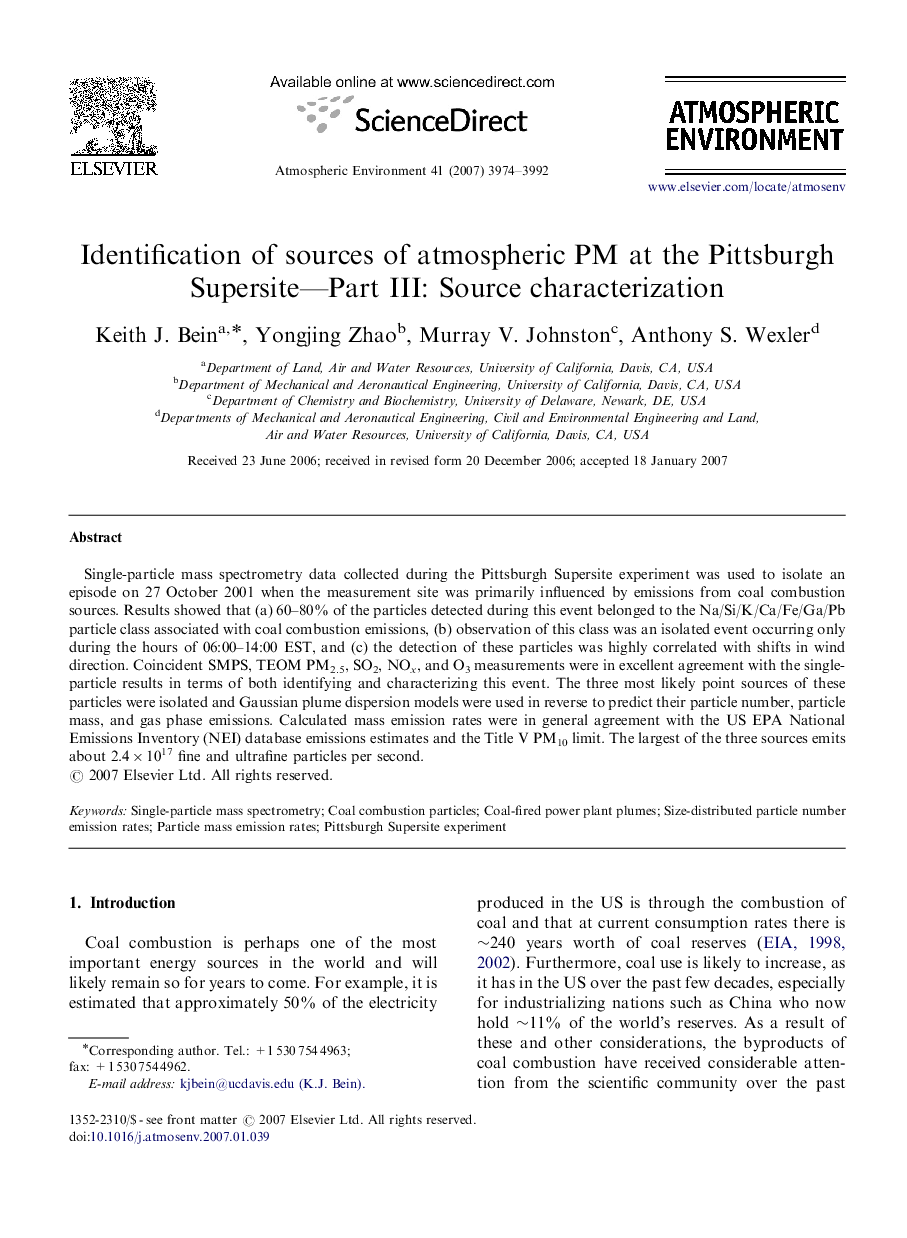| Article ID | Journal | Published Year | Pages | File Type |
|---|---|---|---|---|
| 4443736 | Atmospheric Environment | 2007 | 19 Pages |
Single-particle mass spectrometry data collected during the Pittsburgh Supersite experiment was used to isolate an episode on 27 October 2001 when the measurement site was primarily influenced by emissions from coal combustion sources. Results showed that (a) 60–80% of the particles detected during this event belonged to the Na/Si/K/Ca/Fe/Ga/Pb particle class associated with coal combustion emissions, (b) observation of this class was an isolated event occurring only during the hours of 06:00–14:00 EST, and (c) the detection of these particles was highly correlated with shifts in wind direction. Coincident SMPS, TEOM PM2.5, SO2, NOx, and O3 measurements were in excellent agreement with the single-particle results in terms of both identifying and characterizing this event. The three most likely point sources of these particles were isolated and Gaussian plume dispersion models were used in reverse to predict their particle number, particle mass, and gas phase emissions. Calculated mass emission rates were in general agreement with the US EPA National Emissions Inventory (NEI) database emissions estimates and the Title V PM10 limit. The largest of the three sources emits about 2.4×1017 fine and ultrafine particles per second.
